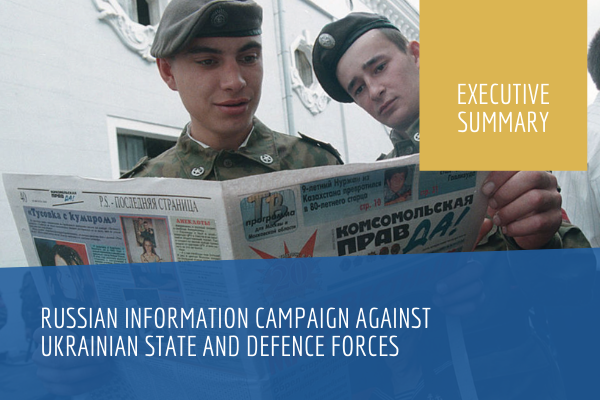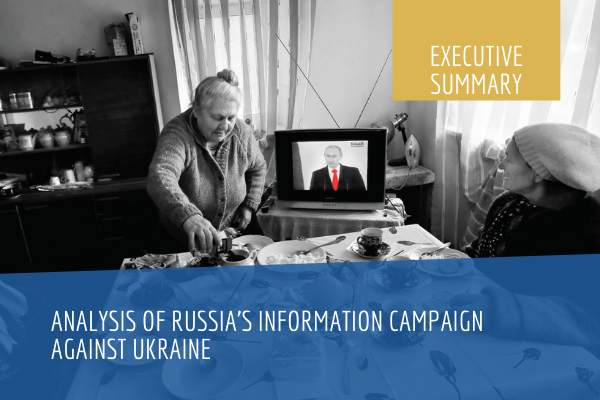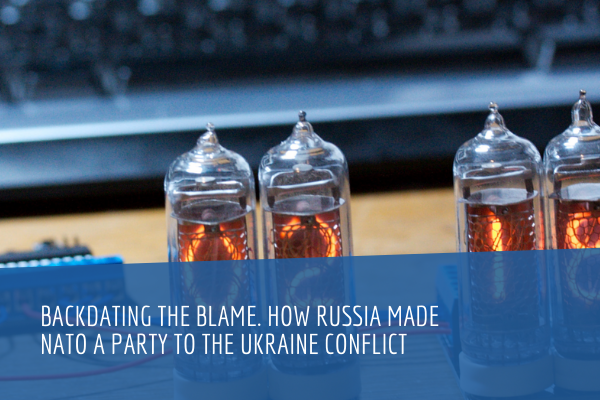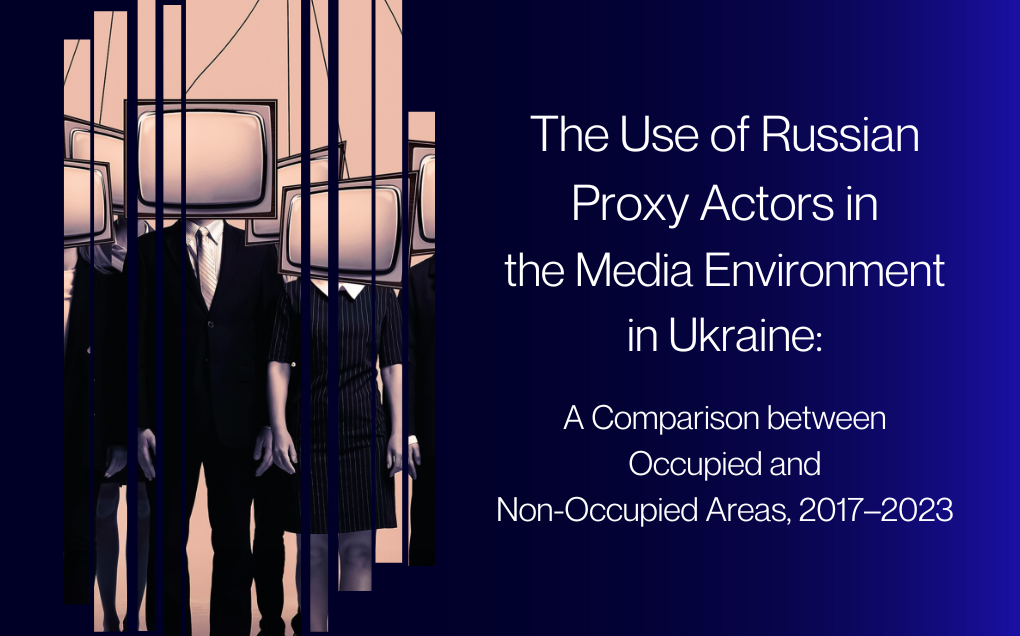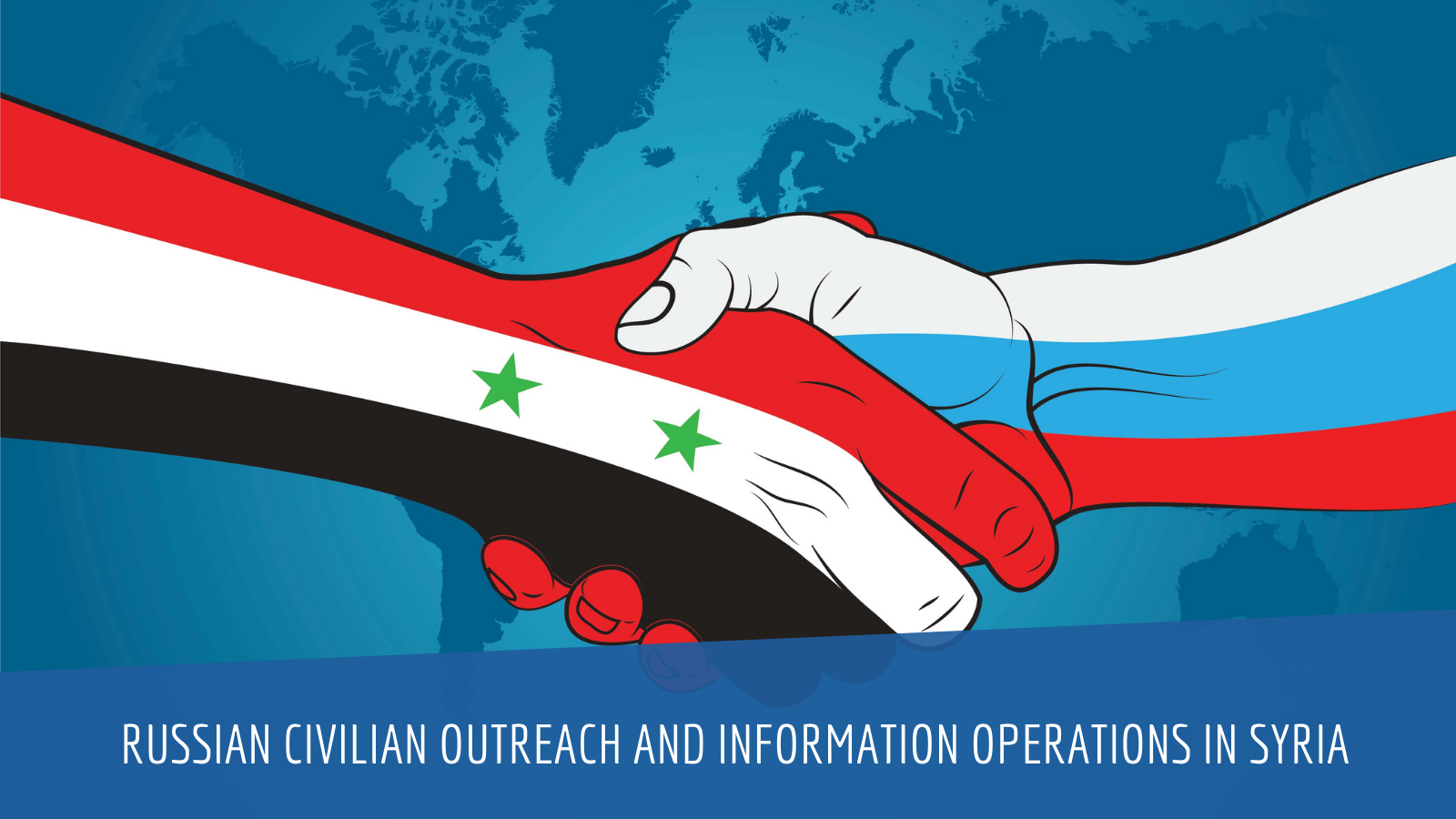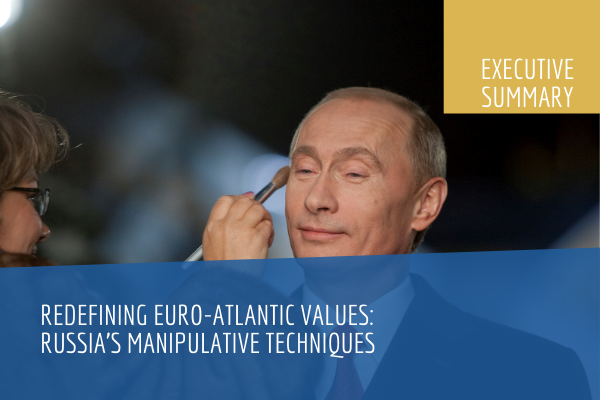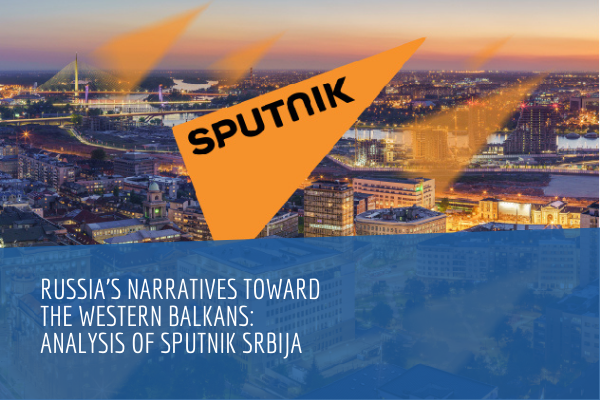The report was executed for the NATO StratCom COE by the Centre for Applied Research under the Estonian National Defence College.
The objective of this research is to identify how the Russian media portrays the Ukrainian military and security structures, including the policies of the Kiev government and their ‘collaboration’ with the West. The research group looks at how messages disseminated in the media attempt to construct attitudes and advocate behaviours in parallel to political and military events on the ground in Ukraine. The research covers the period from 1 April until 31 December 2014 and analyses the following Russian media: Regnum, Komsomolskaya Pravda and TV Zvezda. These media are important because they target not only Russian internal audience but also the Russian-speaking communities in the former territory of the USSR.
The researchers used standardised content analysis in accordance to a specially developed Coding Manual and enriched the findings with data from 25 structured interviews with Ukrainian representatives (media, political and military experts, as well as soldiers and officers involved in the military conflict).
From December 2014 the Russian military has adopted a new doctrine that explicitly states that information superiority is essential to achieving victory on the physical battleground in the modern war. It is crucial for NATO to draw appropriate conclusions from the on-going conflict in Europe in order to further strengthen the unity of the alliance and avoid such conflict scenarios between Russia and NATO in the future.
Russia’s information activities have played a significant role in the overall military operations carried out in the territory of East Ukraine since 2014. Information operations were used at all levels starting with the political level (against the state of Ukraine, state structures, politicians) up to the tactical level for justifying military actions initiated by pro-Russian forces. Information confrontation and a variety of psychological operations continue to play a substantial role in the current crisis in Ukraine. Russia uses various media channels to conduct its operations against Ukraine, including governmental and private TV channels (e.g. Pervyi Kanal, Rossija 1, NTV, Russia Today, LifeNews), radio (e.g. Radio Mayak), mobile phone operators (e.g. KyivStar), Internet sources (including online publications, e.g. Regnum, TV Zvezda, Кomsomolskaya Pravda, Itar Tass, RIA Novosti ) and social media networks (e.g. YouTube, Facebook, Vk.com, odnoklassniki.ru). Some Ukrainian sources hold pro-Russian attitudes and can also be used to spread disinformation (e.g. Vesti). The separatist People’s Republics of Donetsk and Luhansk have their own channels producing anti-Ukrainian propaganda (e.g. dnr-news.com, novorus.info). The current study has focused on the media channels that represent the Russian mainstream—Komsomolskaya Pravda, TV Zvezda, Regnum. These mass media channels are generally critical against the Ukrainian government and armed forces, but do not offer a critical view of the Russian government; they justify Russian policy in Ukraine and see the Ukrainian crisis as a battlefield between Russia and West, referring to the clash of civilisations with the West (primarily the US and NATO, but also the European Union) allegedly intending to advance its sphere of influence towards Russian borders.
RUSSIA’S INFORMATION CAMPAIGN AGAINST UKRAINE
- The Russian information campaign in Ukraine in 2014 was a massive, multifaceted, responsive, and coherent operation that can be considered a proxy war.
- Russia denies direct involvement, but supports local pro-Russian separatists to maintain the conflict. Military activities are supported by an active media campaign that undermines Ukrainian authorities and their political goals to reunite the country.
-
Russia avoids any steps that may promote international involvement in crisis management and does not support the efforts of international organisations (UN, OSCE) to stabilize the situation.
-
The Ukrainian authorities as well as interested international organisations are considered to be merely puppets of the West under the guidance of primarily the United States and NATO. During Putin’s presidency, Russia has declared the restoration of Russia as a Eurasian empire as its national goal. However, according to the ruling narrative, Russia cannot be a real Eurasian Empire if it does not control Ukraine and the Black Sea, and control over Crimea is of utmost importance. In the Russian national mythology, Ukraine was an integral part of the birth of the Russian Empire. Ukraine’s special position makes crisis management there extremely sensitive.
-
Russian information activities skilfully target a wide range of audiences with different beliefs and convictions. The anti-Ukrainian approach relies on a variety of stylistic forms and nuances. It can take the form of sensationalism and blaming (e.g. Komsomolskaya Pravda) or use a more restrained approach (e.g. Regnum, TV Zvezda).
-
In addition to the content of the messages, Russia technically ensures that certain messages reach specific audiences and others do not (i.e. by controlling TV and radio towers, mobile phone operators etc.).
UKRAINIAN COUNTER-ACTIVITIES
- Ukraine has stopped the transmission of Russian TV channels (e.g. NTV, RTR, Pervyi kanal, LifeNews) to Ukraine and promoted its own channels (e.g. Hromadske TV) to replace them.
- Ukraine has created posters and flyers to inform the Ukranian population about the situation, especially in the Eastern part of the country, showing pro-Russian separatist political and military leaders such as Alexander Zakharchenko, Alexander Borodai, Alexander Hodakovsky, and others as criminals.
- Ukrainian activists and NGOs have established websites to disprove false information and fakes from Russia (e.g. www.stopfake.org, en.informnapalm.org).
REPRESENTATION OF THE UKRAINIAN SIDE IN THE RUSSIAN MEDIA
In Russia’s information campaigns against Ukraine, Moscow propagandists use a number of different myths and narratives that are mostly related to the Second World War, Stepan Bandera, and the Ukrainian nationalists of the 1940s, but also refer to Nazism and violence. Additionally, they use the images of the ‘glorious’ Soviet period. Such manipulations in the Russian media are very common since Vladimir Putin came to power in the Russian Federation.
Russia’s information campaign targets a number of different audiences in Ukraine. It aims to disparage the Ukrainian government and demonstrate that it is a corrupt, illegal, and fascist junta. The Ukrainian defence forces (including the volunteer units) are often compared to Einsatztruppen (executions squads), Nazis, killers, terrorists, bandits, and servants of the Kiev junta. Ukraine is portrayed as a failed state, or a puppet of NATO and Western countries. Russian media channels have published fake news stories about foreign soldiers and NATO troops in Ukraine, or try to show that some NATO or EU states help the Kiev junta and Ukrainian army, who kill civilians and are Nazi sympathisers.
In the three media outlets analysed for this research, Ukrainian Armed Forces were mostly mentioned in the context of combat activities, terrorism and violence.
The representatives of the Ukrainian Armed Forces were mostly labelled as fascists and execution squads (reference to the World War II) under the command of the Kiev “junta”. The Ukrainian Government was mostly labelled as fascists and connected with violence.
Often they were characterised as a failed government unable to rule the country, take care of the citizens or command the army.
Regnum used the widest selection of references to historical events, including WWII and the Soviet period, but the share of articles referring to past events did not account for more than 10% of the overall number of articles examined. Therefore, the parallels that are often drawn between Ukraine and Nazi Germany do not come in the form of references to the actual events of the past. Instead, they appear in the form of labels used to describe target groups in Ukraine. While TV Zvezda and Regnum only compare the Ukrainian government with Nazis, Komsomolskaya Pravda extends this judgement to the Ukrainian army and its leadership as well. In general Komsomolskaya Pravda is the most judgemental of the three.
RECOMMENDATIONS
NATO should consider to counter the view which asserts that the Russian state and culture are something inevitably incomprehensible. There is no ‘mysterious Russia’, which acts in an untold manner. The major difference lies in the governance of Russia and the West, and its implications for international relations. However, there is no fundamental difference between Russia and any Western country in terms of carrying out research and raising awareness.
NATO should raise public awareness of specifics of Russia – its history, culture, ideology, politics, governance, army, etc.—in public diplomacy and strategic communications targeted toward internal audiences within member states.
Any efforts on behalf of Russia to portray itself as an exporter of ‘alternative opinions’ must be taken seriously. Disinformation and lies produced by a country where there is effectively no democracy or freedom of speech cannot be mistaken for a source of alternative opinions. In this respect, NATO could foster closer cooperation with numerous NGOs, think tanks, and human rights watchdogs (e.g. Freedom House, Reporters without Borders, Amnesty International, etc.) that are already producing quality materials regarding the real situation in Russia. Same goes to myth- and disinformation- busting initiatives.
Through thorough monitoring and intelligence gathering, NATO should continuously pay attention to non-military actions that may have military co-objectives, including all operations related to information warfare, which have increasing importance in contemporary conflicts. Particular focus should be put on the activities and conflicts with the Russian involvement.
NATO should increase its own information capabilities and be prepared in the event of any kind of information confrontation that would lead not only to military conflict, but also toward political, social, economic, or environmental crisis. Emotions are essential for narrative building and a powerful tool in shaping international relations. The power of hostile information activities may nullify military advantages and disadvantages and may distract political leaders from making rational decisions and designing the attitudes and beliefs of states and societies.
The best way to face any information confrontation would be to present rational arguments supported by real evidence to overturn myths and beliefs that are introduced by destructive powers in order to create panic and manipulate populations.
